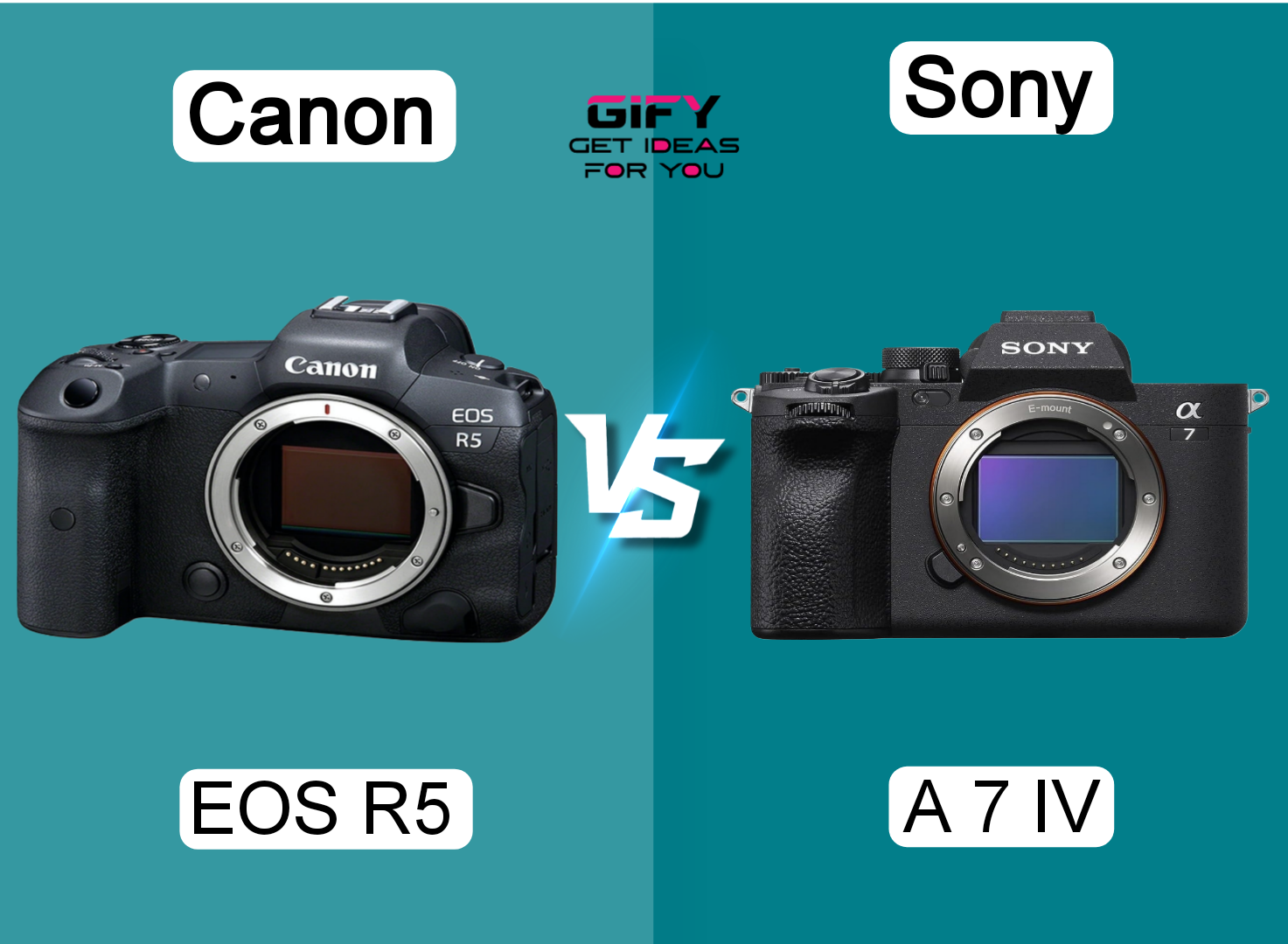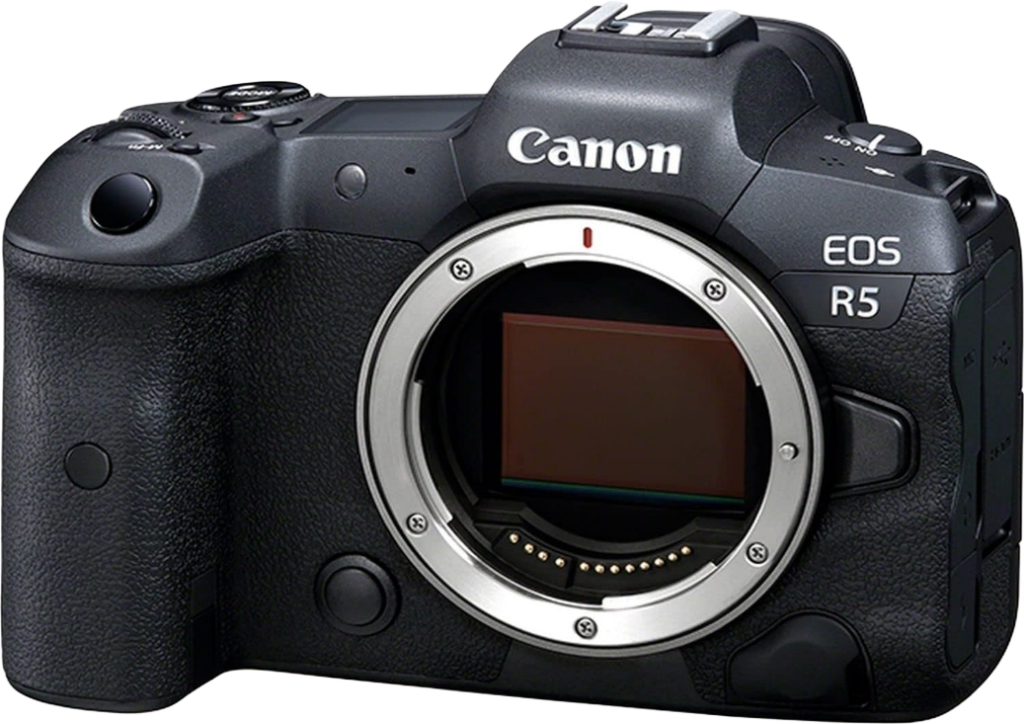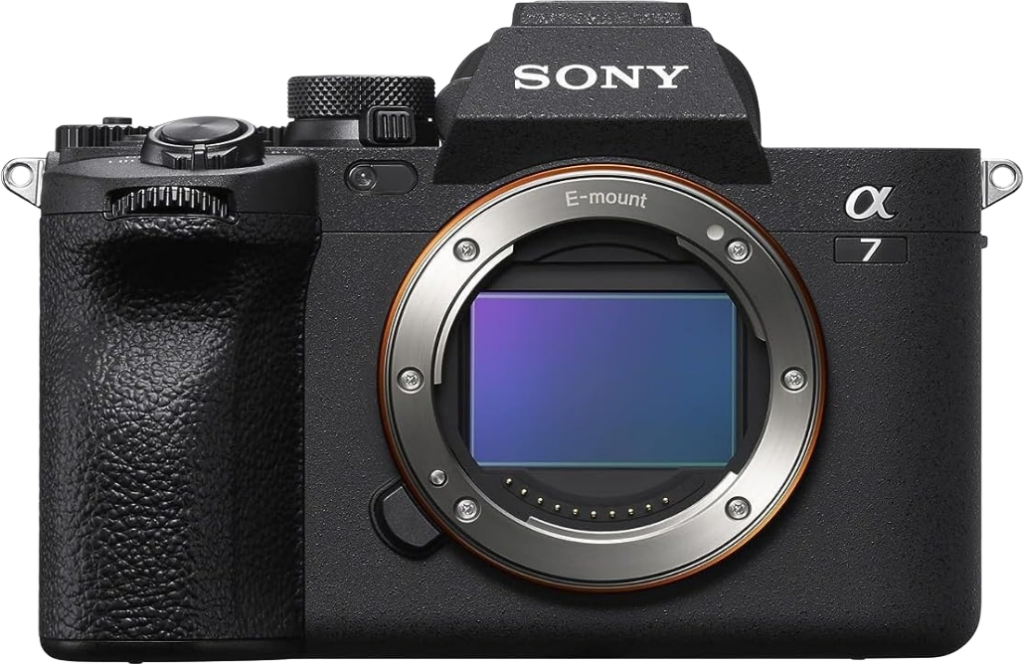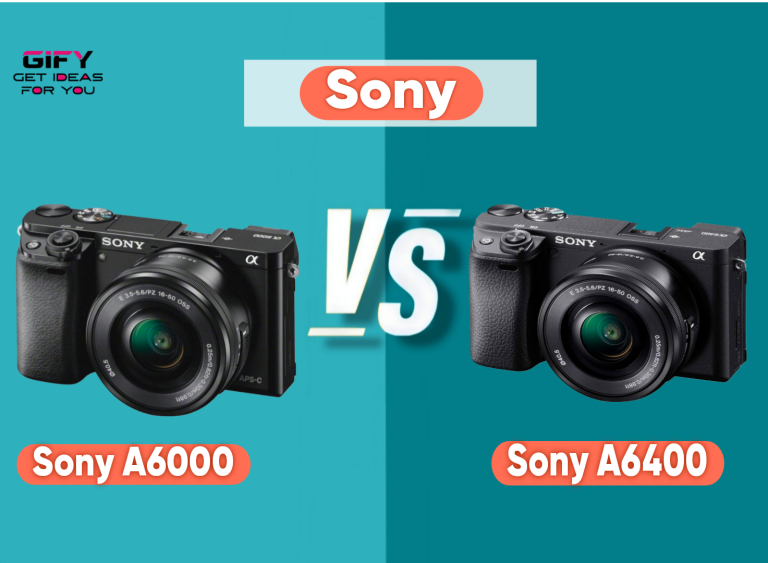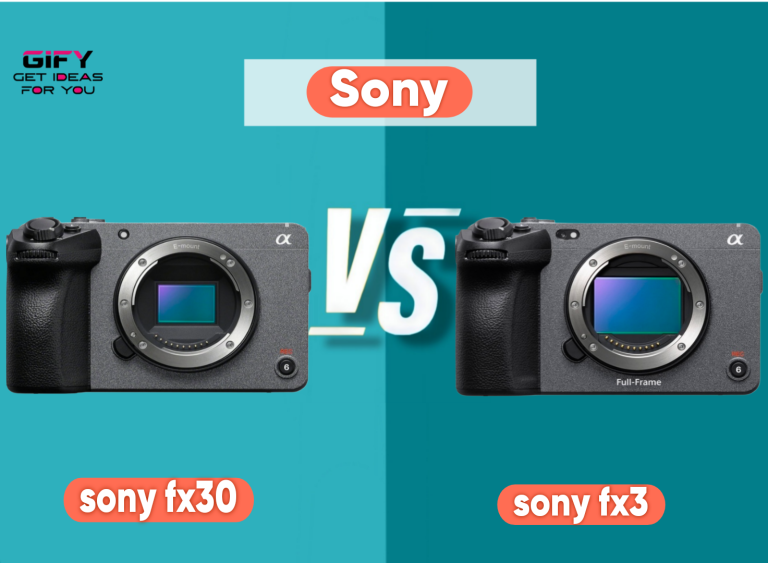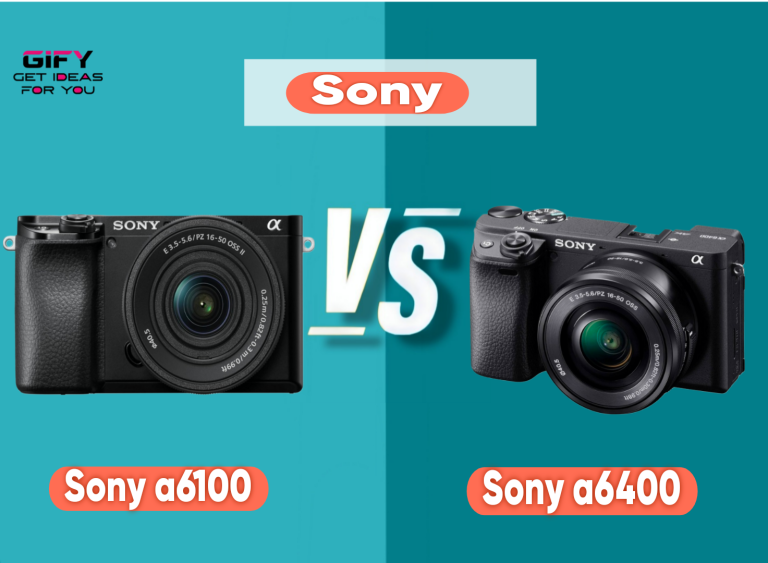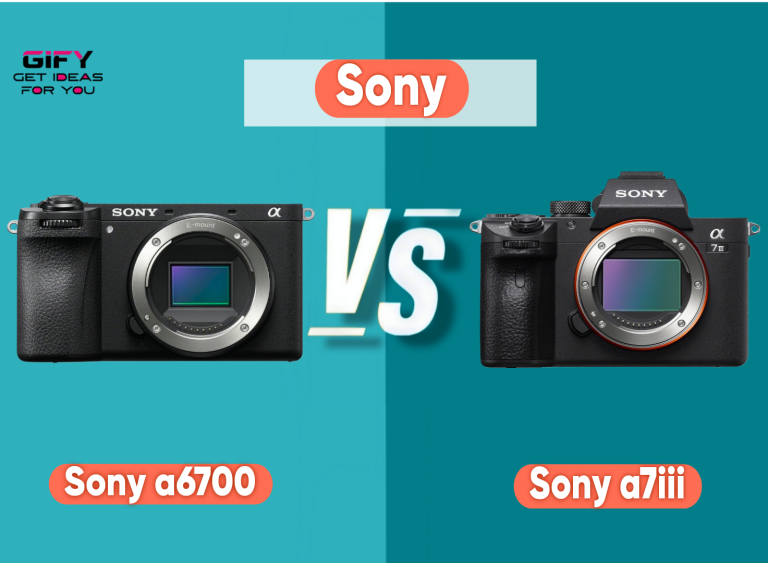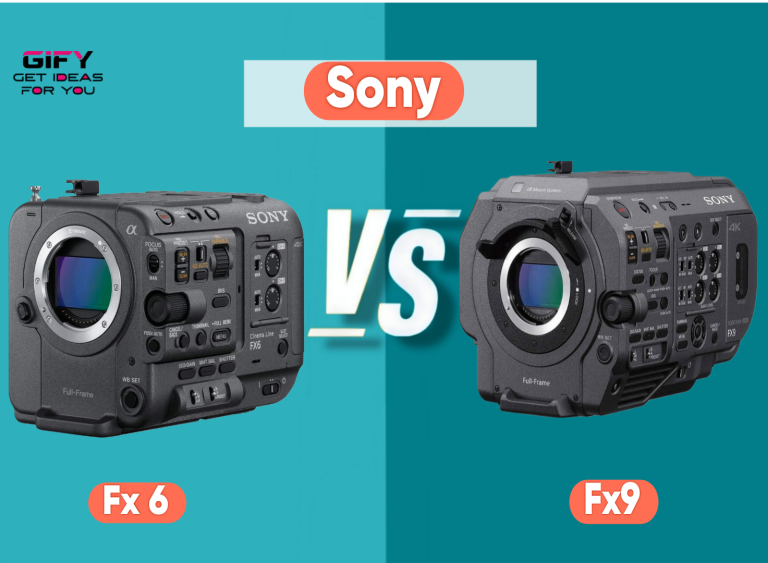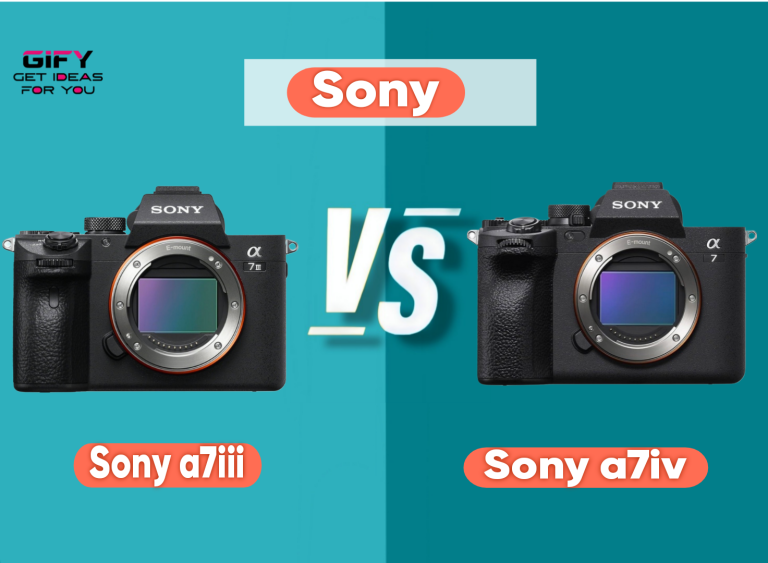Canon R5 vs Sony A7IV – two of the most talked-about full-frame mirrorless cameras in today’s market. Both models have become top choices for professional photographers and videographers who value image quality,
advanced autofocus, and strong video capabilities. This comparison dives deep into what sets them apart and which one might be the better choice for your creative work.
The Canon R5 and Sony A7IV represent the best efforts of Canon and Sony in mirrorless camera innovation. Each camera brings outstanding sensor performance, reliable shooting speeds,
and pro-level video recording options. But they take different approaches to achieving these results, making this head-to-head comparison especially interesting for anyone choosing between them.
While the Canon R5 is famous for its 45-megapixel sensor and 8K RAW video capabilities, the Sony A7IV shines with its 33-megapixel Exmor R sensor and impressive BIONZ XR processor.
Both deliver stunning results, but their handling, color science, and shooting experience differ in ways that matter to professionals and enthusiasts alike.
In this detailed breakdown, we’ll compare design, performance, autofocus, video quality, and more. You’ll also find each camera’s strengths ✅ and drawbacks ❌ clearly explained to help you make the most informed decision before buying your next full-frame camera.
Canon EOS R5 : Full-Frame Hybrid Camera
The Canon EOS R5 is a professional-grade full-frame mirrorless camera designed for those who demand the highest image quality and cutting-edge video performance.
It blends speed, precision, and advanced technology in one compact body, making it ideal for high-end photography and cinematography.
Detailed Overview
The Canon EOS R5 features a 45MP full-frame CMOS sensor that delivers breathtaking image clarity and fine detail. Its back-side illuminated design enhances low-light performance, allowing photographers to capture crisp,
noise-free shots even in challenging lighting conditions. The DIGIC X image processor powers this beast, enabling lightning-fast operation, 8K video recording, and expanded ISO capabilities up to 102400.
High-speed shooting is another highlight. The R5 can shoot up to 12 fps with a mechanical shutter or 20 fps with a silent electronic shutter. This makes it an excellent choice for sports,
wildlife, and event photography, where capturing the perfect moment matters most. Dual Pixel CMOS AF II offers 1,053 AF points covering nearly 100% of the frame, providing remarkable accuracy for both stills and video.
Videographers will appreciate the R5’s ability to record 8K RAW internally and 4K at up to 120fps with full autofocus support. Whether you’re filming cinematic scenes or slow-motion sequences,
the results are incredibly detailed and visually stunning. Eye Control AF, a unique feature that lets you select focus points just by looking through the viewfinder, adds an extra layer of innovation that few cameras can match.
What Is Good ✅
✅ Stunning 45MP full-frame sensor produces incredibly detailed stills.
✅ 8K RAW and 4K 120fps internal video recording deliver professional-grade results.
✅ Fast 20 fps electronic shutter ideal for high-speed action.
✅ Dual Pixel CMOS AF II offers excellent subject tracking and accuracy.
✅ Eye Control AF is intuitive and futuristic for focus selection.
✅ Dual card slots for CFexpress and SD provide flexibility and backup security.
What Is Bad ❌
❌ 8K video can generate significant heat during extended recording.
❌ Battery life is shorter compared to Sony’s newer models.
❌ Larger file sizes require high-capacity memory cards and faster storage.
❌ Pricier than many alternatives in its class.
Overall Verdict
The Canon EOS R5 is an exceptional choice for photographers who prioritize detail, speed, and video quality. Its 45MP sensor, advanced autofocus, and 8K capabilities push creative boundaries.
While the heat issue and battery life are small setbacks, the R5 remains one of the most capable and versatile cameras Canon has ever produced.
Sony A7IV : Full-frame Mirrorless Interchangeable Lens Camera
The Sony A7IV continues Sony’s tradition of delivering outstanding hybrid cameras that cater to both photographers and filmmakers.
It combines strong stills performance, advanced video features, and a reliable autofocus system — all packed into a well-designed, ergonomic body.
Detailed Overview
The Sony A7IV features a 33MP full-frame Exmor R back-illuminated CMOS sensor, offering excellent dynamic range and low-light sensitivity. Paired with the new BIONZ XR image processor —
which is eight times more powerful than its predecessor — the camera delivers smooth operation and enhanced color accuracy. The result is lifelike imagery with impressive tonal transitions and rich detail.
In video mode, the A7IV stands out with its 7K oversampling full-frame 4K 30p footage and 4K 60p 10-bit 4:2:2 recording. Sony’s S-Cinetone color profile makes achieving cinematic color grades simple, which is perfect for content creators and filmmakers who want professional output straight out of the camera.
Autofocus performance is another area where Sony dominates. The A7IV offers real-time Eye AF and subject tracking powered by AI, maintaining sharp focus even in unpredictable scenes.
It’s reliable for both photography and video work, with consistent accuracy across faces, eyes, and even animals. The camera also features a redesigned grip and intuitive menu system for better handling and usability.
What Is Good ✅
✅ 33MP back-illuminated sensor produces excellent image quality with superb low-light performance.
✅ Next-gen BIONZ XR processor ensures fast operation and rich color accuracy.
✅ 4K 60p 10-bit 4:2:2 recording with no pixel binning delivers sharp, cinematic results.
✅ Reliable autofocus with real-time Eye AF and tracking for people and animals.
✅ Long battery life and improved heat management.
✅ S-Cinetone profile for natural and cinematic color rendering.
What Is Bad ❌
❌ 4K 60p recording comes with a slight 1.5x crop.
❌ 33MP sensor offers less resolution than the Canon R5.
❌ Menu navigation can feel complex for new users.
❌ The camera’s price is still premium for its class.
Overall Verdict
The Sony A7IV is a true all-rounder, blending photography and videography performance with user-friendly design. Its improved processor, excellent autofocus,
and versatile video options make it an outstanding choice for creators seeking a reliable hybrid camera. While it doesn’t reach Canon’s 8K heights, it excels in efficiency, color science, and overall shooting experience.
Common Features
Both the Canon EOS R5 and Sony A7IV share a range of powerful features that make them highly capable professional tools. These similarities highlight how both brands continue to innovate and compete at the highest level in the mirrorless market.
- Sensor: Both cameras use full-frame CMOS sensors that deliver exceptional image quality, wide dynamic range, and impressive low-light capability. The Canon’s 45MP offers more resolution, while Sony’s 33MP sensor provides efficient performance and smaller file sizes.
- Max Continuous Shooting: Each model supports high-speed continuous shooting for capturing fast-moving subjects. Canon leads with 20 fps (electronic), while Sony provides reliable burst speeds ideal for most professional needs.
- Max Video Resolution: Canon supports 8K RAW recording, while Sony handles 4K 60p with full pixel readout. Both deliver crisp, detailed video suitable for filmmaking and content creation.
- Viewfinder (EVF) Resolution: Both feature sharp, high-resolution electronic viewfinders for precise composition and real-time feedback.
- Autofocus: Canon’s Dual Pixel CMOS AF II and Sony’s Real-time Eye AF systems deliver advanced tracking and speed. Both perform brilliantly for people, animals, and moving subjects.
- Low-light Autofocus: Both models perform strongly in dim lighting, offering accurate focusing even in challenging scenes.
- Display: Each camera includes a vari-angle touchscreen display, allowing easy framing and intuitive control during shoots.
- Card Slots: Dual card slots on both cameras support simultaneous recording or backup, offering reliability during critical sessions.
- Battery Life (CIPA): Sony holds a slight edge in battery efficiency, while Canon compensates with faster performance and higher-resolution output.
These shared features prove how far mirrorless technology has evolved. Whether you choose Canon or Sony, you’re guaranteed a system that supports professional workflows, delivers stunning results, and adapts easily to both photography and video needs.
Related Article 🎀
FAQs About Canon R5 vs Sony A7IV
Is the Canon R5 better than the Sony A7IV for photography?
The Canon R5 delivers higher resolution at 45MP, making it ideal for landscape and studio photographers. The Sony A7IV, however, provides better battery life and more efficient workflow for hybrid creators.
Which camera offers better video quality?
The Canon R5 leads with 8K RAW recording, while the Sony A7IV focuses on 4K 60p with no pixel binning. Both are excellent, but Canon offers higher resolution, and Sony delivers better thermal management.
Does the Sony A7IV overheat during 4K recording?
No, Sony’s improved cooling system prevents overheating even during extended 4K recording sessions.
Can both cameras shoot in low light?
Yes. Both the Canon R5 and Sony A7IV perform well in low light, with Canon’s higher resolution capturing finer detail and Sony offering smoother noise control.
Which camera should I buy in 2025?
If you want maximum image detail and 8K video, choose the Canon R5. For balanced performance, reliability, and value, the Sony A7IV is an outstanding choice.
Conclusion
The battle of Canon R5 vs Sony A7IV comes down to priorities. Canon delivers unbeatable resolution and 8K video performance, while Sony excels in color science, battery life, and handling. Both are world-class cameras built for serious professionals and enthusiasts.
Photographers seeking ultimate detail and cinematic flexibility will find the Canon R5 nearly flawless, while creators who want a balanced, efficient, and user-friendly hybrid camera will likely prefer the Sony A7IV.
Whichever you choose, both cameras showcase the best of modern imaging technology — pushing boundaries and empowering you to capture your vision with precision and style.

